Visual Learning Resources
These diagrams illustrate the key concepts and relationships within the course, helping you visualize the interconnected nature of leadership development.
Leadership Framework Integration
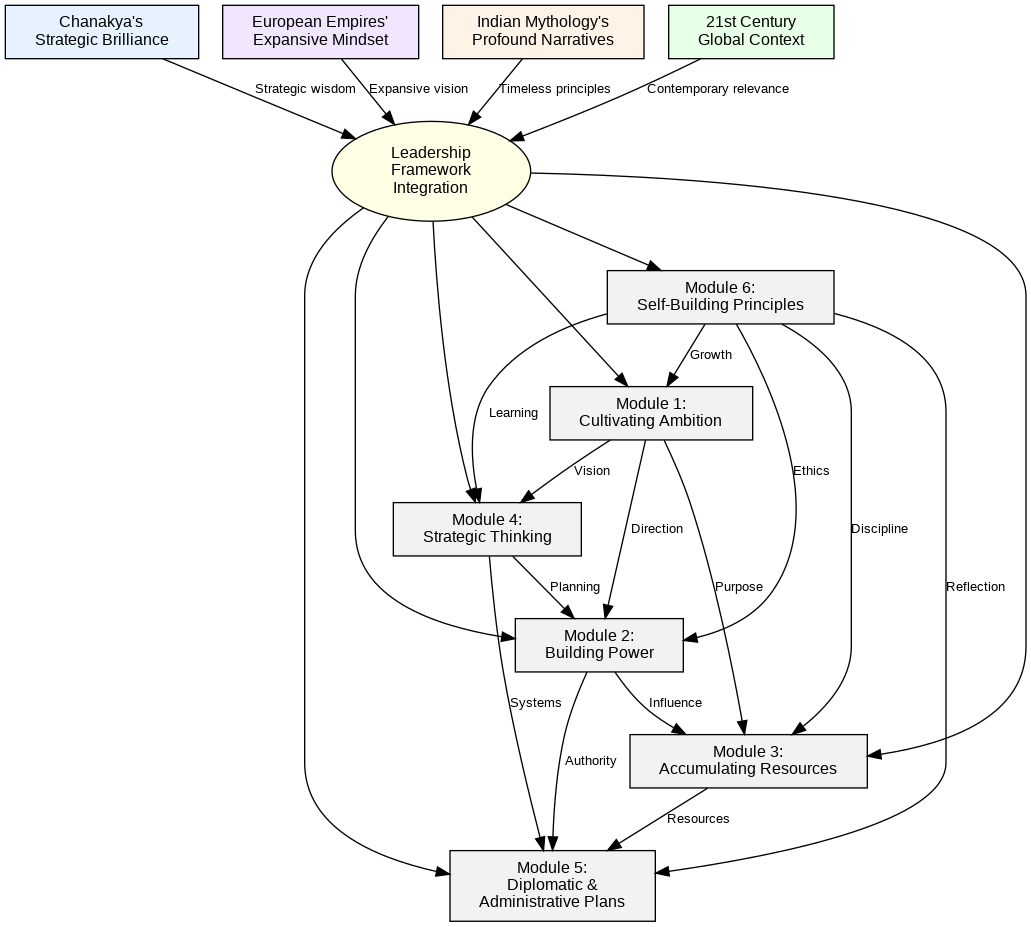
This diagram illustrates how the course integrates wisdom from multiple sources:
- Chanakya's Strategic Brilliance: Ancient Indian political and economic wisdom
- European Empires' Expansive Mindset: Historical approaches to growth and governance
- Indian Mythology's Profound Narratives: Timeless stories with leadership lessons
- 21st Century Global Context: Modern applications and challenges
The diagram shows how these sources feed into the central Leadership Framework, which then connects to all six course modules. The interconnections between modules demonstrate how each area of leadership development supports and enhances the others.
Ambition Cultivation Cycle
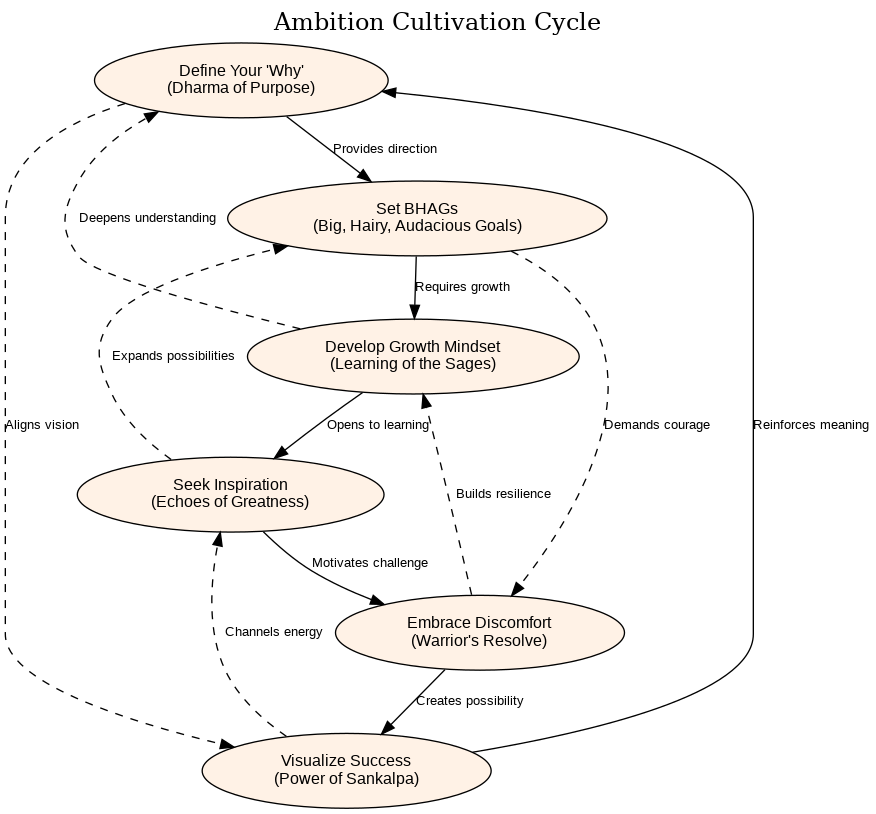
This cycle illustrates the six interconnected elements of cultivating ambition from Module 1:
- Define Your "Why" (Dharma of Purpose): Establishing your core purpose
- Set BHAGs (Big, Hairy, Audacious Goals): Creating ambitious targets
- Develop Growth Mindset (Learning of the Sages): Embracing continuous improvement
- Seek Inspiration (Echoes of Greatness): Finding motivation in exemplars
- Embrace Discomfort (Warrior's Resolve): Pushing beyond comfort zones
- Visualize Success (Power of Sankalpa): Mental rehearsal of achievement
The cycle shows how these elements reinforce each other, creating a continuous process of ambition development. The solid lines represent the primary cycle, while the dashed lines show additional relationships between non-adjacent elements.
Power and Influence Matrix

This matrix from Module 2 maps the six sources of power and influence:
- Develop Expertise (Scholar King): Building knowledge and skills
- Build Strong Network (Strategic Alliance): Creating valuable connections
- Enhance Communication (Diplomat's Tongue): Mastering expression
- Demonstrate Reliability & Integrity (Unshakeable Foundation): Building trust
- Take Initiative (Proactive Leader): Acting with courage
- Understand Influence Tactics (Sama, Dana, Bheda, Danda): Applying persuasion
The matrix organizes these sources along two dimensions: Personal vs. Positional power, and Internal vs. External sources. All six elements connect to the central Power Integration node, showing how they work together to create comprehensive influence.
Resource Accumulation Pyramid
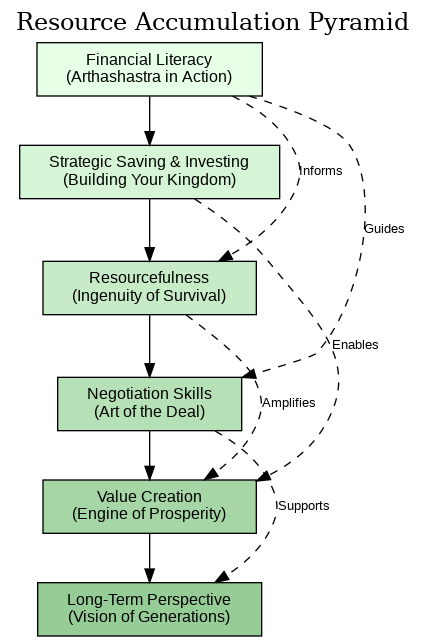
This pyramid from Module 3 illustrates the hierarchical progression of resource mastery:
- Financial Literacy (Arthashastra in Action): Understanding money fundamentals
- Strategic Saving & Investing (Building Your Kingdom): Growing wealth systematically
- Resourcefulness (Ingenuity of Survival): Maximizing available resources
- Negotiation Skills (Art of the Deal): Securing favorable exchanges
- Value Creation (Engine of Prosperity): Generating new resources
- Long-Term Perspective (Vision of Generations): Planning for lasting impact
The pyramid structure shows how each level builds upon the previous ones, while the dashed lines indicate how certain elements can directly influence non-adjacent levels. The gradient coloring represents increasing sophistication in resource management as you move up the pyramid.
Strategic Thinking Web
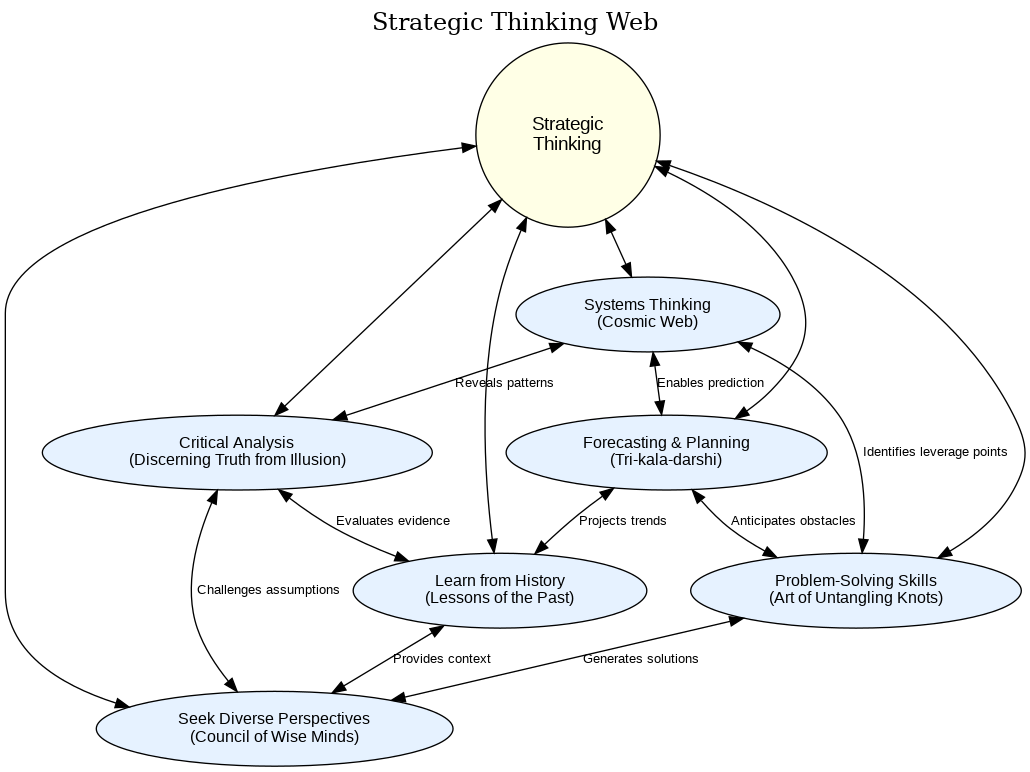
This web from Module 4 depicts the interconnected elements of strategic thinking:
- Systems Thinking (Cosmic Web): Understanding complex relationships
- Critical Analysis (Discerning Truth from Illusion): Evaluating information
- Forecasting & Planning (Tri-kala-darshi): Anticipating future scenarios
- Problem-Solving Skills (Art of Untangling Knots): Resolving challenges
- Learn from History (Lessons of the Past): Applying historical wisdom
- Seek Diverse Perspectives (Council of Wise Minds): Incorporating varied viewpoints
The web structure emphasizes that strategic thinking is not linear but interconnected, with each element supporting and enhancing the others. All elements connect to the central Strategic Thinking node, while also having direct relationships with specific other elements as shown by the connecting lines.
Diplomatic and Administrative Balance
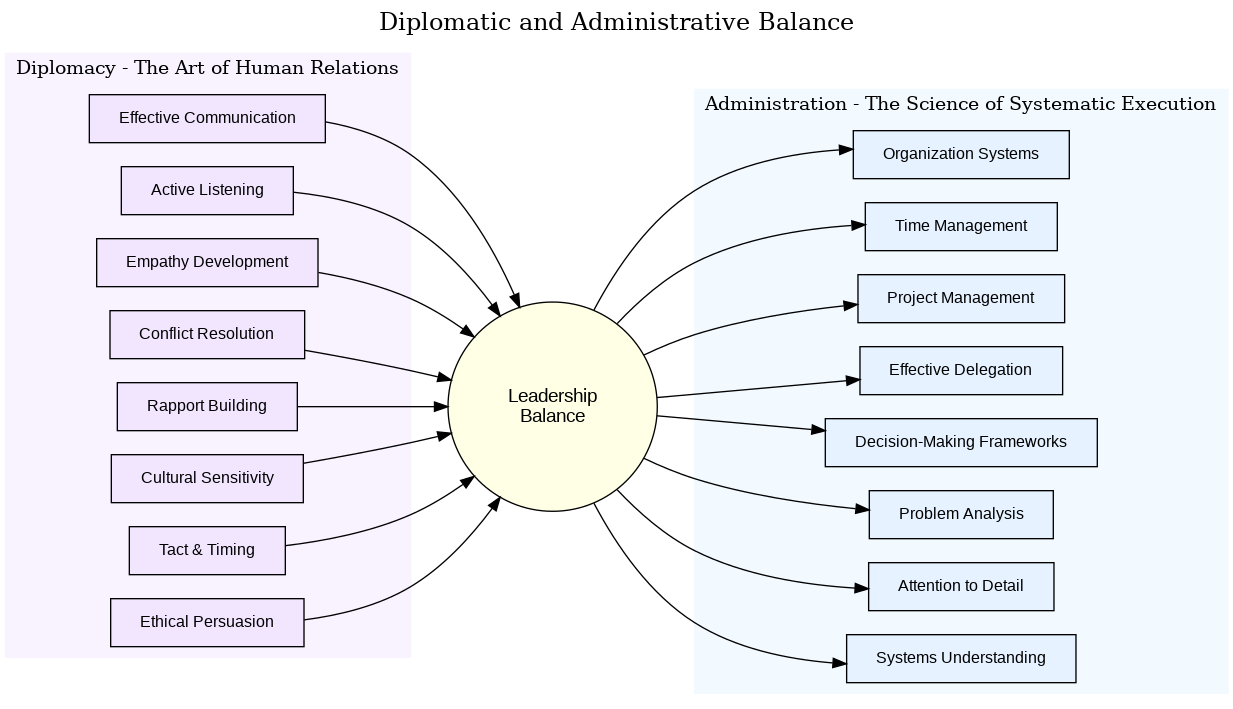
This diagram from Module 5 illustrates the complementary nature of diplomatic (people-focused) and administrative (systems-focused) skills:
Diplomacy - The Art of Human Relations:
- Effective Communication
- Active Listening
- Empathy Development
- Conflict Resolution
- Rapport Building
- Cultural Sensitivity
- Tact & Timing
- Ethical Persuasion
Administration - The Science of Systematic Execution:
- Organization Systems
- Time Management
- Project Management
- Effective Delegation
- Decision-Making Frameworks
- Problem Analysis
- Attention to Detail
- Systems Understanding
The diagram shows how both sets of skills connect to the central Leadership Balance node, emphasizing that effective leadership requires mastery of both human relations and systematic execution.
Self-Building Virtues Cycle
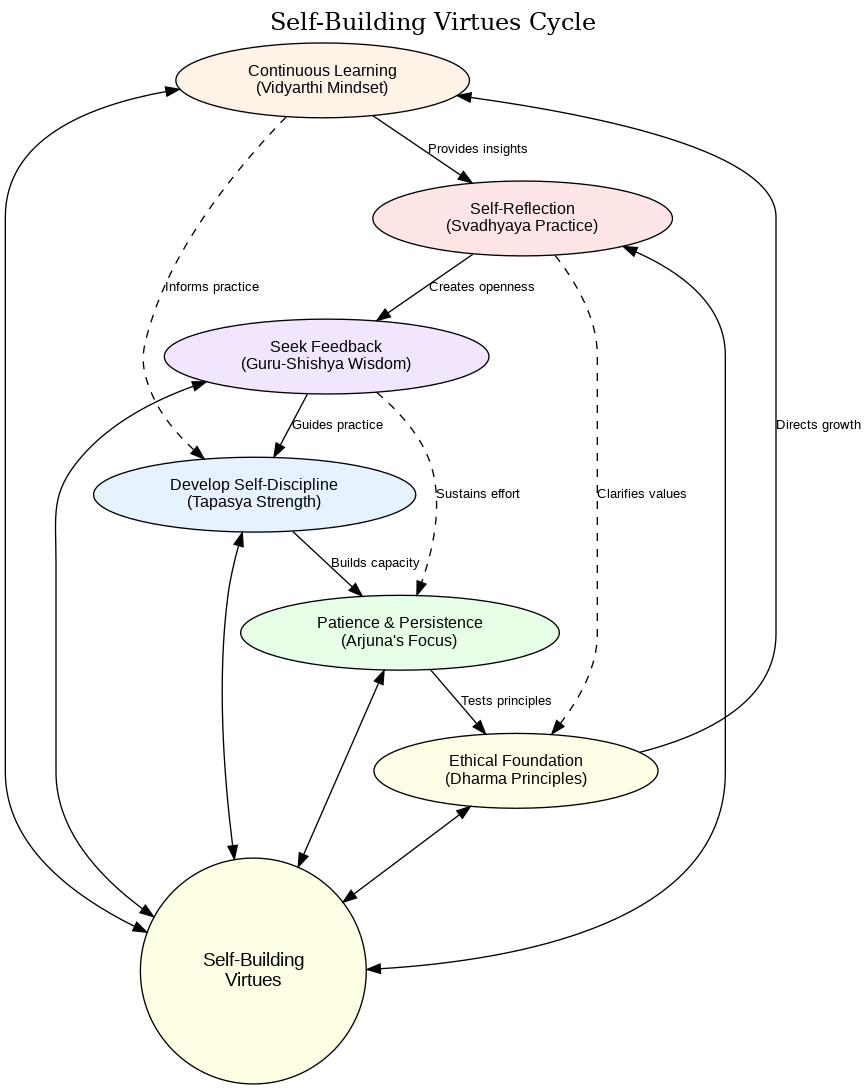
This cycle from Module 6 illustrates the ongoing process of personal development through six interconnected virtues:
- Continuous Learning (Vidyarthi Mindset): Embracing lifelong education
- Self-Reflection (Svadhyaya Practice): Examining one's thoughts and actions
- Seek Feedback (Guru-Shishya Wisdom): Actively soliciting input
- Develop Self-Discipline (Tapasya Strength): Building consistent habits
- Patience & Persistence (Arjuna's Focus): Maintaining long-term commitment
- Ethical Foundation (Dharma Principles): Aligning with core values
The cycle shows how these virtues flow into each other in a continuous process of self-improvement. Each virtue also connects to the central Self-Building Virtues node, representing their collective contribution to personal development. The dashed lines show additional relationships between non-adjacent virtues, highlighting the complex interplay between different aspects of self-building.